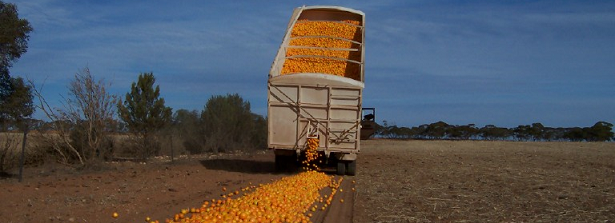
Agricultural commodities go through several operations such as transportation of outputs, processing, and storage before getting to the consumer. Outputs undergo significant losses during these handling stages. The sum total of quantity lost in the process is known as postharvest losses (PHL) 1. In developing counties, the importance of PHL has not been fully identified in instances where agricultural production has not been linked to marketing1. Major causes of postharvest losses at harvest are insect pests and diseases, harvesting method and time, crop variety not resistant to pests and pathogens, and unfavourable weather conditions.
Investments in production resources such as fertilizers and irrigation are higher than those focused on postharvest-related losses which result into failure to meet food security. On the contrary, reduction of postharvest losses increases food available for consumption. Information on losses and the extent at different levels of the value chain is not only technologists and scientists but also useful for industrialists, administrators and policy makers 1.
In a world where farmers face struggles in rural developing economy and resources being scarce, reducing PHL allows them to have more crops and increased supply of grains 2. Quality losses may lead to economic losses when a farmer’s produce losses attributes which make it less attractive to consumers. Economic losses occur when a product misses on a market opportunity 3.
Fruits and vegetables are more susceptible to quantity and quality deterioration in tropic conditions especially due to their moisture content 1. It not only reduces availability but also leads to increase in unit cost of marketing and transport 4. This affects producers in shares of commodity price as well as consumers where prices are increased due to reduced availability.
While the goal of a policy is well comprehended, the micro-economics associated with loss are not 2. However, in absence of objective and reliable estimates, on PHL at different stages of the value chain, from production to consumption, establishment of policies on reduction becomes a challenge.
REFERENCES
1 Kumar, D. K., Basavaraja, H. & Mahajanshetti, S. An economic analysis of post-harvest losses in vegetables in Karnataka. Indian Journal of Agricultural Economics 61 (2006).
2 Goldsmith, P. D., Martins, A. G. & de Moura, A. D. The economics of post-harvest loss: a case study of the new large soybean-maize producers in tropical Brazil. Food Security 7, 875-888 (2015).
3 Affognon, H., Mutungi, C., Sanginga, P. & Borgemeister, C. Unpacking postharvest losses in sub-Saharan Africa: a meta-analysis. World Development 66, 49-68 (2015).
4 Murthy, D. S., Gajanana, T., Sudha, M. & Dakshinamoorthy, V. Marketing and post-harvest losses in fruits: its implications on availability and economy. Indian Journal of Agricultural Economics 64 (2009).